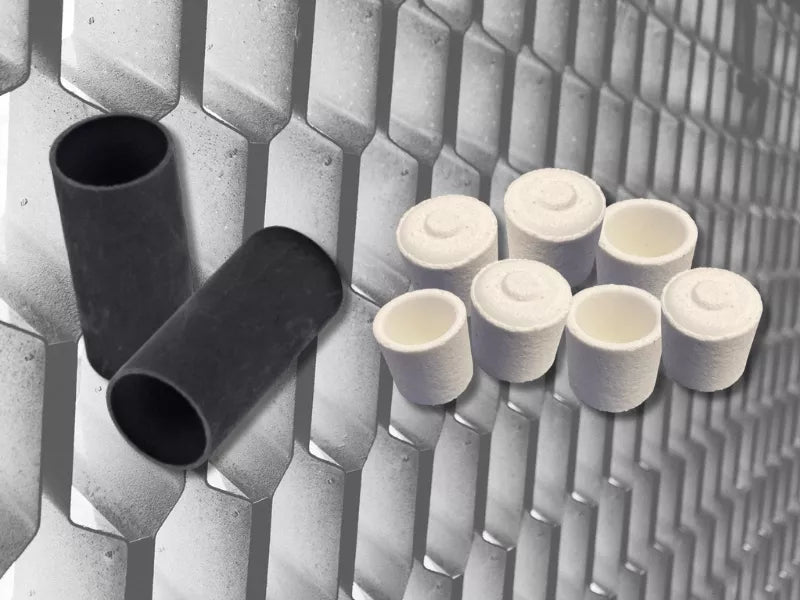You use crucibles for sample analysis, but do you know the difference between ceramic and graphite crucibles?
Graphite crucibles and ceramic crucibles are both commonly used in laboratories and industrial processes for heating substances to high temperatures, but they differ in terms of material composition, properties, and applications. At HORIBA, we use crucibles in our CS and ONH analyzers. Here are some key differences between graphite and ceramic crucibles:
Material Composition:
Graphite Crucibles:
- Graphite crucibles are made from graphite, a form of carbon known for its high thermal conductivity and resistance to high temperatures.
- Graphite crucibles may also contain other additives or binders to enhance their strength and durability.
Ceramic Crucibles:
- Ceramic crucibles are typically made from various types of ceramics, including alumina (aluminum oxide), porcelain, or silica-based materials.
- Ceramic crucibles may be composed of pure ceramic materials or mixtures with additives to improve their properties.
Thermal Properties:
Graphite Crucibles:
- Graphite has excellent thermal conductivity, allowing for rapid and uniform heating of the contents within the crucible.
- Graphite crucibles can withstand extremely high temperatures, making them suitable for applications involving molten metals and high-temperature reactions.
Ceramic Crucibles:
- Ceramic materials generally have lower thermal conductivity compared to graphite.
- Ceramic crucibles can still withstand high temperatures, but they may not be as efficient in transferring heat to the contents as graphite crucibles.
Chemical Resistance:
Graphite Crucibles:
- Graphite is relatively inert and resistant to most chemical reagents, making graphite crucibles suitable for a wide range of chemical and metallurgical applications.
- However, graphite may react with certain chemicals or atmospheres at very high temperatures, leading to degradation or contamination.
Ceramic Crucibles:
- Ceramic materials can exhibit excellent chemical resistance to corrosive substances, depending on their composition.
- Ceramic crucibles are often preferred for applications involving strong acids, bases, or reactive chemicals that may corrode graphite.
Mechanical Strength:
Graphite Crucibles:
- Graphite crucibles are generally more brittle compared to ceramic crucibles, but they can still withstand mechanical stresses associated with handling and thermal cycling.
- Specialized graphite formulations may offer enhanced mechanical strength for specific applications.
Ceramic Crucibles:
- Ceramic crucibles tend to be more robust and resistant to mechanical damage than graphite crucibles.
- Ceramic materials can endure thermal shock better than graphite, reducing the risk of cracking or fracturing during rapid temperature changes.
Applications:
Graphite Crucibles:
- Graphite crucibles are commonly used in metallurgy, foundries, and high-temperature processing industries for melting and casting metals, alloys, and other materials.
- They are also suitable for high-temperature reactions, such as synthesis or decomposition processes in chemical laboratories.
Ceramic Crucibles:
- Ceramic crucibles find applications in chemical laboratories, analytical chemistry, and materials science for various heating, calcination, and ashing processes.
- They are preferred for applications involving corrosive chemicals or reactions that require precise temperature control.
In summary, graphite crucibles offer superior thermal conductivity and are ideal for high-temperature applications, while ceramic crucibles excel in chemical resistance and mechanical strength, making them suitable for a broader range of chemical processes. The choice between graphite and ceramic crucibles depends on the specific requirements of the application, including temperature range, chemical compatibility, and mechanical durability.
If you want more information about our HORIBA CS and ONH analysers, please visit our website Elemental Analyzers for Carbon, Sulfur, Oxygen, Nitrogen and Hydrogen - HORIBA


